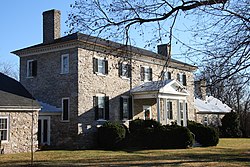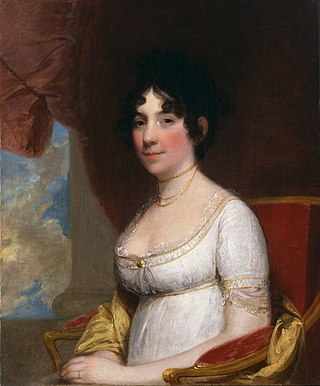
Dolley Todd Madison was the wife of James Madison, the fourth president of the United States from 1809 to 1817. She was noted for holding Washington social functions in which she invited members of both political parties, essentially spearheading the concept of bipartisan cooperation. Previously, founders such as Thomas Jefferson would only meet with members of one party at a time, and politics could often be a violent affair resulting in physical altercations and even duels. Madison helped to create the idea that members of each party could amicably socialize, network, and negotiate with each other without violence. By innovating political institutions as the wife of James Madison, Dolley Madison did much to define the role of the President's spouse, known only much later by the title first lady—a function she had sometimes performed earlier for the widowed Thomas Jefferson.

Charles Town is a city in and the county seat of Jefferson County, West Virginia, United States. The population was 6,534 at the 2020 census. The city is named for its founder Charles Washington, youngest brother of President George Washington. It is part of the northwestern fringes of the Washington metropolitan area.

Gilbert Stanley Underwood was an American architect best known for his National Park lodges.

West Virginia Route 51 is a state highway that runs west to east from Berkeley County to Jefferson County in West Virginia's Eastern Panhandle. The western terminus is at WV 45 northwest of Gerrardstown. The eastern terminus is at an interchange with U.S. Route 340 and WV 9 east of downtown Charles Town. US 340 continues to the east on the same roadway as WV 51.

Samuel Washington was an American planter, politician and military officer best known for being the younger brother of the first president of the United States, George Washington.
Lawrence Augustine Washington was a nephew of United States President George Washington and son of Samuel Washington and his fourth wife, Anne Steptoe.
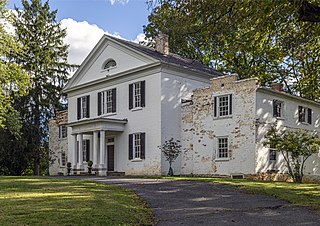
Happy Retreat is a historic property in Charles Town, West Virginia, which was originally owned and developed by Charles Washington, the youngest brother of George Washington and the founder of Charles Town.

Richard Cutts was an American merchant and politician. A Democratic-Republican, he was most notable for his service as Second Comptroller of the United States Treasury from 1817 to 1829 and a United States representative from Massachusetts from 1801 to 1813.

Claymont Court, or simply Claymont, is a Georgian-style brick mansion, the grandest of several built near Charles Town, West Virginia for members of the Washington family. The current "Big House" was built in 1840 for Bushrod Corbin Washington, nephew of Supreme Court justice Bushrod Washington and grand-nephew of George Washington, to replace the 1820 main house on his plantation that burned in 1838.

Cedar Lawn, also known as Berry Hill and Poplar Hill, is one of several houses built near Charles Town, West Virginia for members of the Washington family. Cedar Lawn was built in 1825 for John Thornton Augustine Washington, George Washington's grand-nephew. The property was originally part of the Harewood estate belonging to Samuel Washington. The property that eventually became Cedar Lawn was left to Samuel's son, Thornton Washington, who built "Berry Hill", named for his wife's family. Berry Hill was destroyed by fire, and John Thornton Augustine built Cedar Lawn when he inherited.
Barleywood is a farm in Jefferson County, West Virginia, on land once owned by Samuel Washington, brother of George Washington. The farm is close to Samuel's manor house, Harewood, from which the Barleywood property was subdivided in 1841. The Barleywood house was built in 1842, as well as several outbuildings which survive. The house sat vacant from the 1960s to the late 2010s and during that time it suffered from vandalism. It is now a private residence.
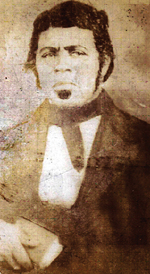
Paul Jennings (1799–1874) was an American abolitionist and author. Enslaved as a young man by President James Madison during and after his White House years, Jennings published, in 1865, the first White House memoir. His book was A Colored Man's Reminiscences of James Madison, described as "a singular document in the history of slavery and the early American republic."
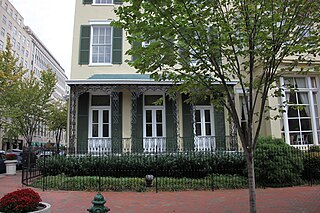
The Cutts–Madison House is an American colonial-style historic home, now used for offices located at 1520 H Street NW in Washington, D.C. The house is best known for being the residence of former First Lady Dolley Madison, who lived there from November 1837 until her death in July 1849.
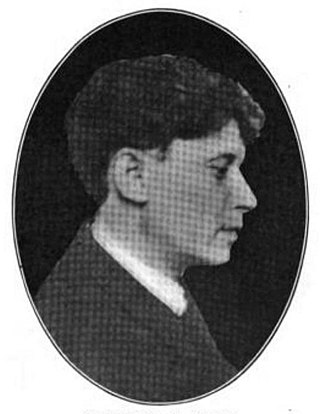
Frederick F. Faris (1870–1927) was a Wheeling, West Virginia-based architect.

George Steptoe Washington was a Virginia planter and militia officer who died at the age of 37 of tuberculosis.
John Thornton Augustine Washington was a prominent Virginia farmer who served a term in the Virginia House of Delegates. Washington was a grandnephew of George Washington, first President of the United States.
Emile Weil was a noted architect of New Orleans, Louisiana.

Eugenia Scholay Washington was an American historian, civil servant, and a founder of the lineage societies, Daughters of the American Revolution and Daughters of the Founders and Patriots of America.
Frye and Chesterman was an American architectural firm formed in 1900 by partners Edward Graham Frye (1870–1942) and Aubrey Chesterman (1874–1937) with offices in Lynchburg, Virginia. In 1913 the firm moved to Roanoke, Virginia.
